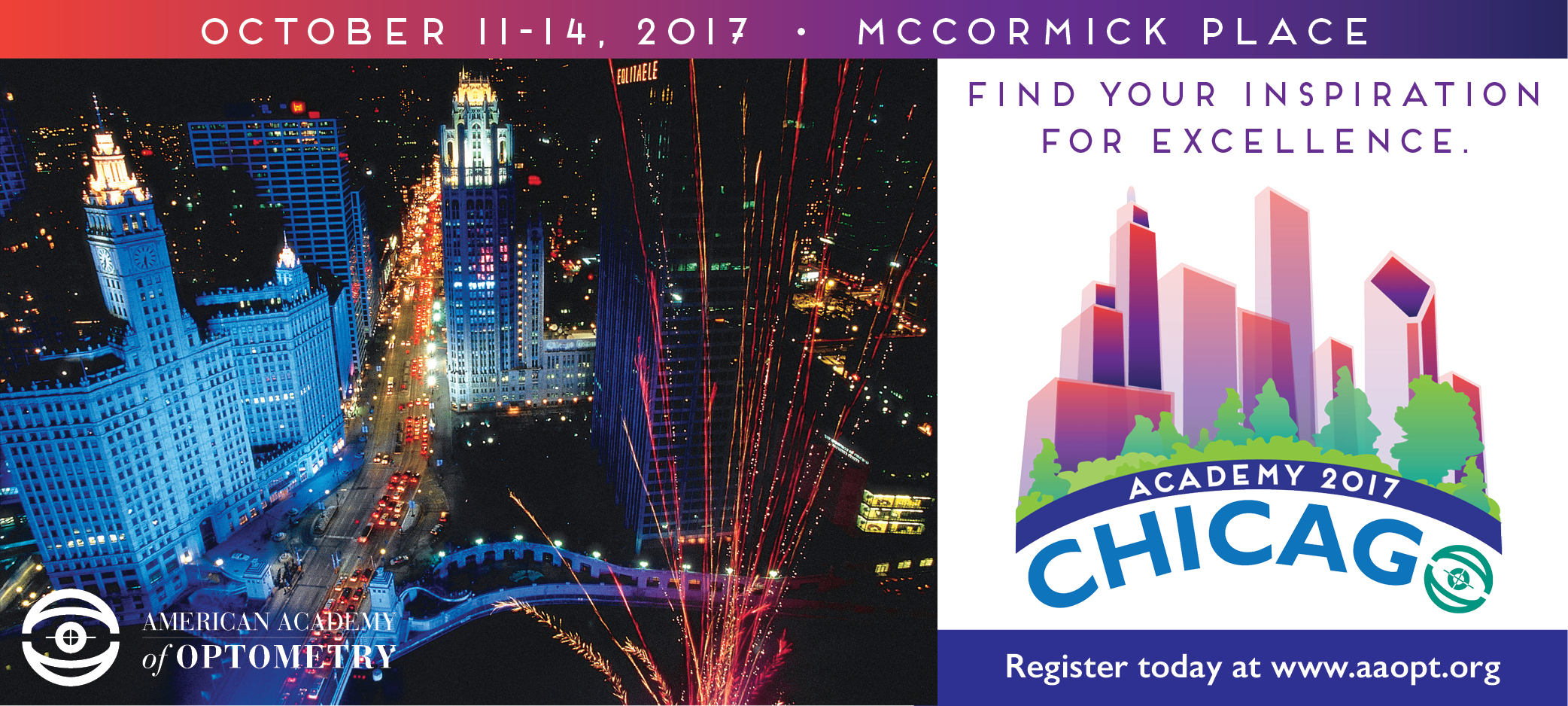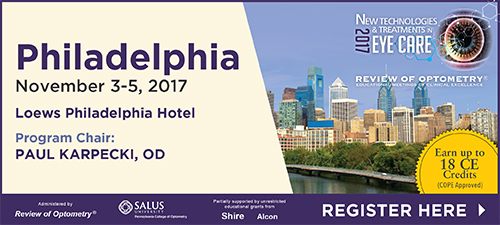
A
weekly e-journal by Art Epstein, OD, FAAO
Off the Cuff: The MGD Conundrum
With each new “dry eye” patient, I grow more and more convinced that true dye eye is virtually non-existent. The term itself is antiquated at best, originally used in ancient texts by philosophers and physicians who, at least by today’s standards, knew virtually nothing about the eye. As a descriptor of symptoms, dry eye may be fitting, but as an explanation of cause, definitely not. We know that increasing use of digital devices is a likely contributor and precursor to symptomatic “dry eye,” as is the growing imbalance in our diets. I can’t help but wonder how many patients remain undiagnosed and how much needless suffering will result. Perhaps it’s time that meibography becomes as routinely performed as tonometry to ensure that patients with meibomian gland dysfunction get treated early, before irreversible damage occurs. Meibomian gland disease, regardless of what we call it, is both an opportunity for optometry—and more importantly for our patients—a seriously unmet medical need.
|
|||||

|
||
TFOS DEWS-II Report Now Available
|
|
|||
| Association Between Glaucoma, Anxiety & Depression in a Large Population | ||||
This retrospective case-control study investigated the association between glaucoma, anxiety and depression. All patients over the age of 18 years seen between July 1, 2008, and October 1, 2015, were included. International classification of disease codes were used to identify cases of glaucoma as well as anxiety and depression. Odds ratios (ORs) were calculated for glaucoma, anxiety and depression. ORs were also calculated for diagnoses, separated by age and sex.
A total of 4,439,518 patients were screened, of which 11,234 (0.3%) had glaucoma, 96,527 (2.2%) had anxiety and 103,476 (2.3%) had depression. The adjusted OR was 10.6 (95% confidence interval [CI] 10 to 11) for glaucoma and anxiety and 12.3 (95% CI 11.8 to 12.9) for glaucoma and depression. The likelihood of having anxiety and depression along with glaucoma did not change with age. Researchers found a statistically significant association between glaucoma, anxiety and depression. |
||||
SOURCE: Zhang X, Olson DJ, Le P, et al. The association between glaucoma, anxiety and depression in a large population. Am J Ophthalmol 2017; Jul 28. [Epub ahead of print]. |
||||
 |
||
| Reactive Oxygen Species, Oxidative Stress, Glaucoma & Hyperbaric Oxygen Therapy | ||||
This review examined the role of oxidative stress in damage to cells of the trabecular meshwork along with associated impaired aqueous drainage, retinal ganglion cell damage and visual field loss. The authors considered vascular and mechanical explanations for pathological changes in glaucoma. For example, they wrote, elevated intraocular pressure (IOP) forces may contribute to ischemia, but increasing evidence reveals that altered blood flow in a wider sense is also involved.
They explained that both vascular and mechanical theories are involved through fluctuations in intraocular pressure and dysregulation of blood flow. Further, retinal function is sensitive to changes in hemoglobin oxygen concentration and the associated variations in the production of reactive oxygen species. The authors added that reperfusion injury and production of reactive oxygen species occurs when IOP is elevated or blood pressure is low and beyond the capacity for blood flow autoregulation to maintain appropriate oxygen concentration. As such, they proposed, activities such as those associated with postural changes, muscular effort, eye wiping and rubbing, which cause IOP fluctuation, may have significant vascular, mechanical, reperfusion and oxidative stress consequences. The authors wrote that hyperbaric oxygen therapy exposes the eye to increased oxygen concentration and the risk of oxidative damage in susceptible individuals. However, they added, oxygen concentration in aqueous humor and the risk of damage to trabecular meshwork cells may be greater if hyperbaric oxygen is delivered by a hood that exposes the anterior ocular surface to higher-than-normal oxygen levels. They found that oronasal mask delivery of hyperbaric oxygen therapy appeared to be indicated in these cases. |
||||
SOURCE: McMonnies C. Reactive oxygen species, oxidative stress, glaucoma and hyperbaric oxygen therapy. J Optom. 2017; Jul 28. [Epub ahead of print]. |
||||

|
||
| Therapeutic Potential of Co-Enzyme Q10 in Retinal Diseases | ||||
Coenzyme Q10 (CoQ10) plays a critical role in mitochondrial oxidative phosphorylation by serving as an electron carrier in the respiratory electron transport chain, authors wrote. CoQ10 also functions as a lipid-soluble antioxidant by protecting lipids, proteins and DNA damaged by oxidative stress, they added.
CoQ10 deficiency has been associated with a number of human diseases including mitochondrial diseases, neurodegenerative disorders, cardiovascular diseases, diabetes and cancer, along with the aging process. In many of these conditions CoQ10 supplementation therapy has been effective in slowing or reversing pathological changes, the authors noted. Oxidative stress is also a major contributory factor in the process of retinal degeneration, they highlighted. The authors further discussed CoQ10’s use in the treatment of age-related macular degeneration and glaucoma, and suggested that CoQ10 could have therapeutic potential for other retinal diseases in light of current data. |
||||
SOURCE: Zhang X, Tohari AM, Marcheggiani F, et al. Therapeutic potential of co-enzyme Q10 in retinal diseases. Curr Med Chem. 2017 Aug 1. [Epub ahead of print] |
||||
 |
||
| News & Notes | |||||||||
| Johnson & Johnson Vision to Acquire TearScience Johnson & Johnson Vision announced a definitive agreement to acquire TearScience. The acquisition will provide strategic value to Johnson & Johnson Vision and expand its portfolio of products in eye health. As one example, TearScience has an FDA-cleared, office-based approach to image meibomian glands and treat meibomian gland dysfunction. Johnson & Johnson Vision will acquire TearScience through its surgical vision operating company Abbott Medical Optics. Financial terms of the transaction have not been disclosed. The transaction is expected to close by the end of the year.
|
|||||||||
Avedro Corneal Collagen Cross-linking Phase III Study Results Published
|
|||||||||
| Southern College of Optometry Opens Telemedicine Clinic Southern College of Optometry opened FocalPoint, reportedly the first U.S. facility to offer completely paperless telemedicine via EyecareLive. FocalPoint’s 8,000-square-foot clinic has four doctors and offers several technological advances for eye health along with exclusive new eyewear lines and clinical instruction space for the college’s students. In addition, FocalPoint is one of 12 locations to offer customizable eyewear through HOYA’s Yuniku system. Read more.
|
|||||||||
|
Optometric Physician™ (OP) newsletter is owned and published by Dr. Arthur Epstein. It is distributed by the Review Group, a Division of Jobson Medical Information LLC (JMI), 11 Campus Boulevard, Newtown Square, PA 19073. HOW TO ADVERTISE |





